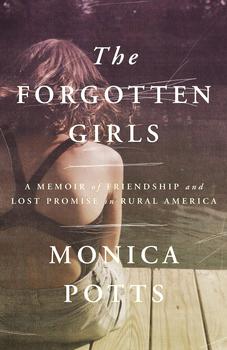Summary | Excerpt | Reviews | Beyond the book | Read-Alikes | Genres & Themes | Author Bio

The Long Life of a Double Murder in Appalachia
by Emma Copley EisenbergA stunningly written investigation of the murder of two young women--showing how a violent crime casts a shadow over an entire community.
In the early evening of June 25, 1980 in Pocahontas County, West Virginia, two middle-class outsiders named Vicki Durian, 26, and Nancy Santomero, 19, were murdered in an isolated clearing. They were hitchhiking to a festival known as the Rainbow Gathering but never arrived; they traveled with a third woman however, who lived. For thirteen years, no one was prosecuted for the "Rainbow Murders," though deep suspicion was cast on a succession of local residents in the community, depicted as poor, dangerous, and backward. In 1993, a local farmer was convicted, only to be released when a known serial killer and diagnosed schizophrenic named Joseph Paul Franklin claimed responsibility. With the passage of time, as the truth seemed to slip away, the investigation itself caused its own traumas--turning neighbor against neighbor and confirming a fear of the violence outsiders have done to this region for centuries.
Emma Copley Eisenberg spent years living in Pocahontas and re-investigating these brutal acts. Using the past and the present, she shows how this mysterious act of violence has loomed over all those affected for generations, shaping their fears, fates, and the stories they tell about themselves. In The Third Rainbow Girl, Eisenberg follows the threads of this crime through the complex history of Appalachia, forming a searing and wide-ranging portrait of America--its divisions of gender and class, and of its violence.
The book is the culmination of Eisenberg's five years of research on the unsolved murder of two young women in West Virginia during the summer of 1980. Through illuminating facts and hard-hitting personal accounts, Eisenberg crafts a compelling narrative that turns a forgotten incident into something relevant and timely...continued
Full Review
 (636 words)
(636 words)
(Reviewed by Tara Mcnabb).
 In The Third Rainbow Girl, Emma Copley Eisenberg examines an unsolved double murder that took place in West Virginia in 1980. Her focus is not so much on the murder itself but on the long term impact on the community as a whole. In the USA, an estimated 200,000 murder cases since the 1960s remain unsolved. Each one of these leaves a lasting impact, not just on those directly connected to the victim(s) but on the community at large. Despite having a crime rate below the national average, West Virginia has its own share of unsolved murders including these four high profile cases:
In The Third Rainbow Girl, Emma Copley Eisenberg examines an unsolved double murder that took place in West Virginia in 1980. Her focus is not so much on the murder itself but on the long term impact on the community as a whole. In the USA, an estimated 200,000 murder cases since the 1960s remain unsolved. Each one of these leaves a lasting impact, not just on those directly connected to the victim(s) but on the community at large. Despite having a crime rate below the national average, West Virginia has its own share of unsolved murders including these four high profile cases:
December, 1945: The Sodder family was large compared to most families; they had a total of nine children living at home when on Christmas Eve of 1945, ...

If you liked The Third Rainbow Girl, try these:

by Monica Potts
Published 2024
Talented and ambitious, Monica Potts and her best friend, Darci, were both determined to make something of themselves. How did their lives turn out so different?

by Sierra Crane Murdoch
Published 2021
The gripping true story of a murder on an Indian reservation, and the unforgettable Arikara woman who becomes obsessed with solving it - an urgent work of literary journalism.
Censorship, like charity, should begin at home: but unlike charity, it should end there.
Click Here to find out who said this, as well as discovering other famous literary quotes!